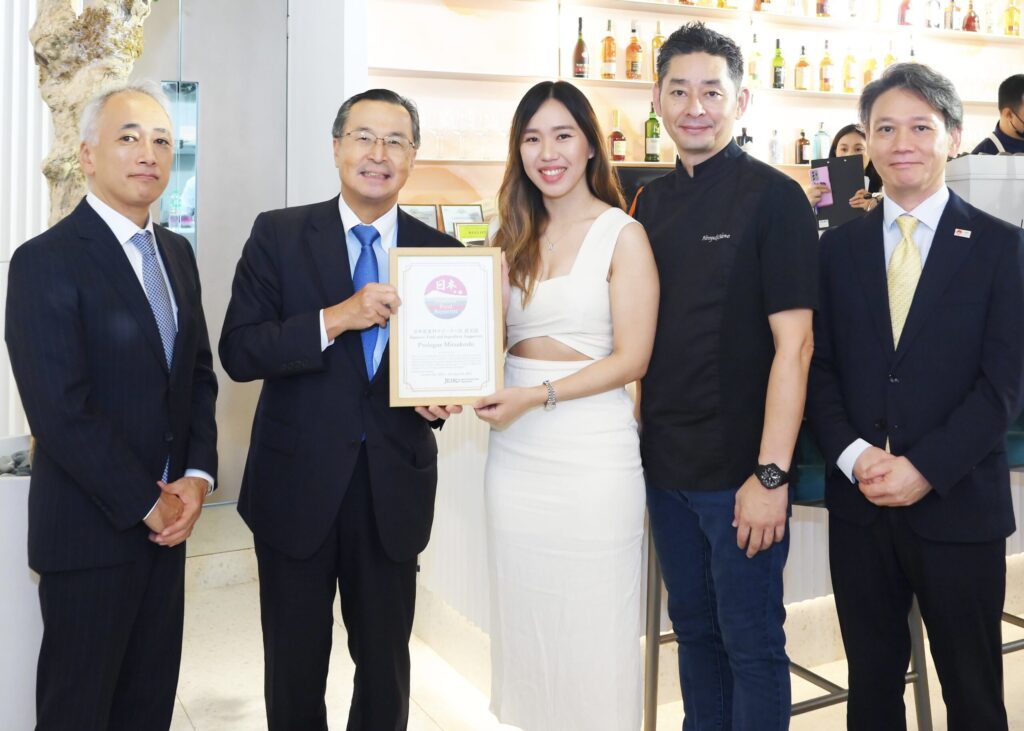In a country adorned with over 14,125 islands and boasting an impressive 18,480 miles of coastline, Japan emerges as a seafood paradise where culinary artistry intertwines harmoniously with a deep-rooted cultural reverence for the ocean. From the world-famous delicacies of sushi, sashimi and tempura to the lesser-known regional specialties, Japanese cuisine showcases a mastery that hinges on freshness and precision, captivating the senses and drawing in visitors from around the globe.
Yet the allure of Japanese seafood extends far beyond the familiar. Across the nation, regional specialties beckon with their unique and diverse flavors. Hokkaido, the northernmost island, boasts succulent scallops and crabs that delight the palate with their sweetness and tenderness. In Fukuoka, the vibrant city in southwestern Japan, the local delicacy of mentaiko, or marinated pollock roe, tantalizes taste buds with its rich and bold flavors. These regional variations offer a glimpse into the vast tapestry of Japan’s seafood heritage, each one a distinct representation of the land and its people.
However, Japanese seafood is not solely about taste; it encompasses a profound connection to the sea that runs through the veins of its inhabitants. The ocean is seen as more than a source of sustenance — it holds a sacred place in Japanese culture, symbolizing spiritual nourishment. Generations of fishermen have relied on its bounties, fostering a deep appreciation for the gifts it provides. This reverence for the sea permeates the culinary traditions of Japan, infusing every dish with a sense of gratitude and respect.
A seafood spectacle
In a world of ever-expanding culinary exploration, Japan’s seafood offerings stand as a testament to the country’s rich gastronomic heritage. And it is this experience that goes beyond food that the Japan External Trade Organization hopes to bring to the Philippines.
Through “A Seafood Spectacle,” JETRO hopes to bring Filipinos on a gastronomic journey that celebrates the Land of the Rising Sun’s rich culture and culinary traditions, from fishermen’s traditional rituals to festivals celebrating bountiful catches. JETRO chairman and CEO Norihiko Ishiguro graced the event to welcome guests and presented the Japanese Food Supporter Store Certification to Prologue.
The meticulously crafted seven-course menu was made in collaboration with chef Hiroyuki Meno of Prologue to offer guests a delicious taste of Japan’s very best.
Chef Meno’s seven-course special
Prologue’s dedication is evident in their commitment to exclusively serve freshly caught fish, transported all the way from Japan. Their focus lies on offering premium seafood, such as the delectable hamachi (yellowtail) sourced from Kagoshima, a picturesque seaside city nestled on Japan’s Kyūshū Island. Equally enticing is their silky Maguro (Bluefin Tuna), hailing from Nagasaki, a vibrant city situated on the northwest coast of Kyūshū Island. Additionally, Prologue proudly presents Hirame (Halibut), sourced from Miyagi, a Japanese prefecture that graces Honshu Island’s Pacific coastline.

For “A Seafood Spectacle,” chef Meno also featured Uni (sea urchin) from Hokkaido, the northernmost of Japan’s four main islands, and Kombu (dried edible kelp) from Hokkaido, which he turned into Dashi jelly and Tororo.

From Toyama, a coastal city on Honshu Island famous for the picturesque Uradome Coast and Tottori Sand Hill, we enjoyed the subtle brininess of Surume Ika (squid), Amaebi (sweet shrimp) from Tottori in the Chūgoku Region of Honshu Island, soft and silky Hotate (scallops) from Hokkaido and Hamaguri (Asian clams) from Chiba near Tokyo Bay in the Kanto Region.
Sumptuous wagyu
Aside from the seafood spectacle, we also sampled luxurious Japanese Wagyu. In Japan, Ōita Prefecture is known for having some of the best Kuroge (Japanese black beef) in the country. Chef Meno incorporated various Japanese elements to accentuate the Kuroge, like Tamari (Japanese soy sauce) and Katsuo-laced Béarnaise.
Sweet ending
For dessert, we savored Warabimochi, a kind of Wagashi (Japanese confection) that Chef Meno made with French Black Fig, Kinako (sweet toasted soybean flour), and Kuromitsu (syrup made from Okinawa black sugar). It was served with Hoji Vanilla Ice on the side, featuring traditional Hojicha, or green tea from Kyoto.

Bespoke drinks
Each course was paired with stellar Japanese wines and spirits like Yamazakura Tokubetsu Junmai, Atiho Umeshu (plum wine) with Honey and Yuzu, Beniotome Standard, Komasa Gin Sakurajima (made of local Mandarin oranges or Komikan from Sakurajima) and Komasa Gin Hojicha (green tea), traditional rice shochu like Juju Japanese Craft Gin and Okukuma, and Black Tea-flavored liqueur Little Kiss.
All these Japanese seafood items and specialty products are conveniently available online at Dough & Grocer (www.doughandgrocer.com), a virtual food store created by the people behind Prologue, and in-store at Mitsukoshi Fresh.
“A Seafood Spectacle” is just one of the many events mounted by JETRO as part of the “Bringing a Taste of Japan” campaign in Metro Manila. For updates, visit www.jetro.go.jp/philippines.
